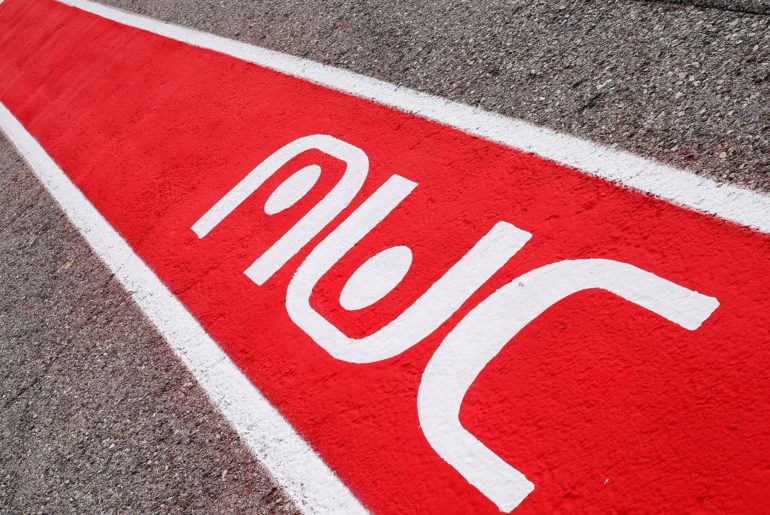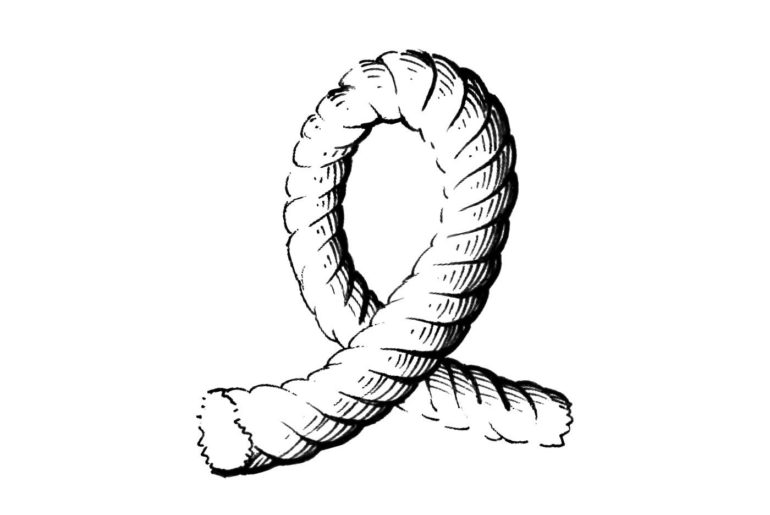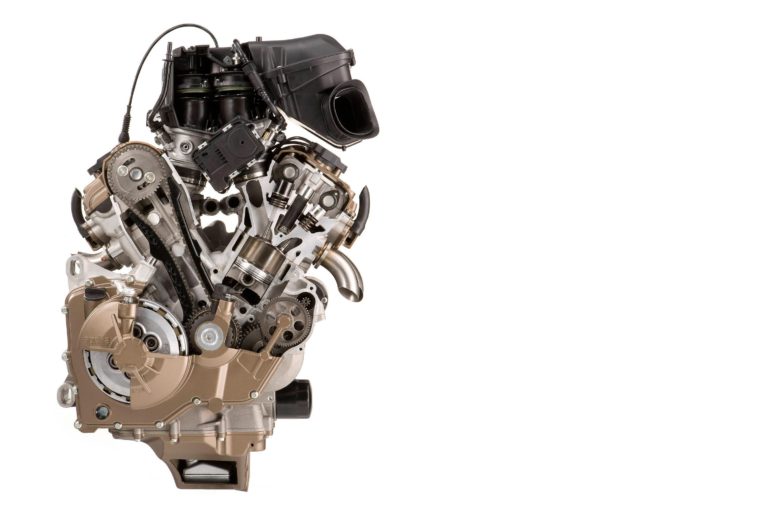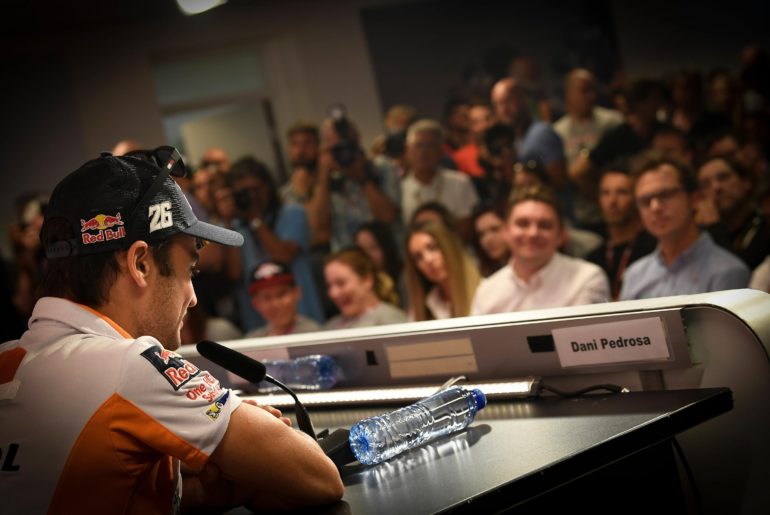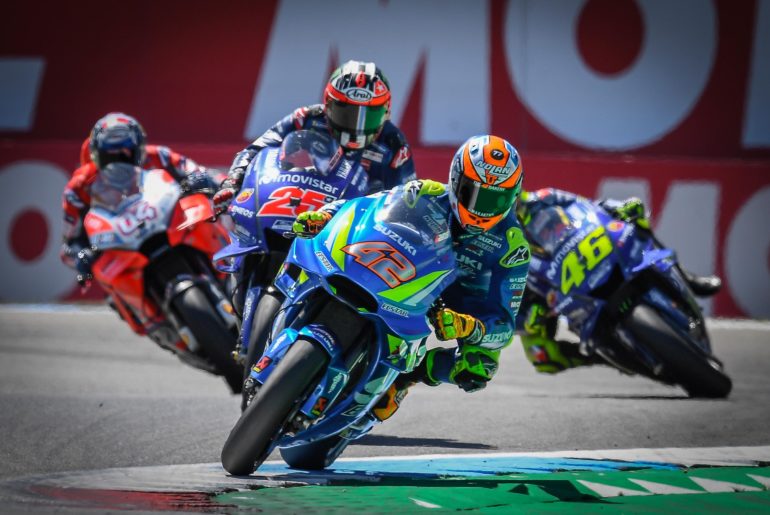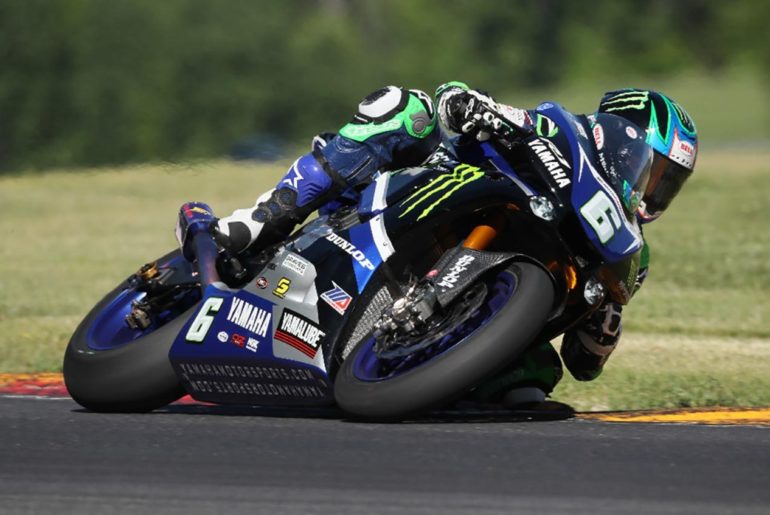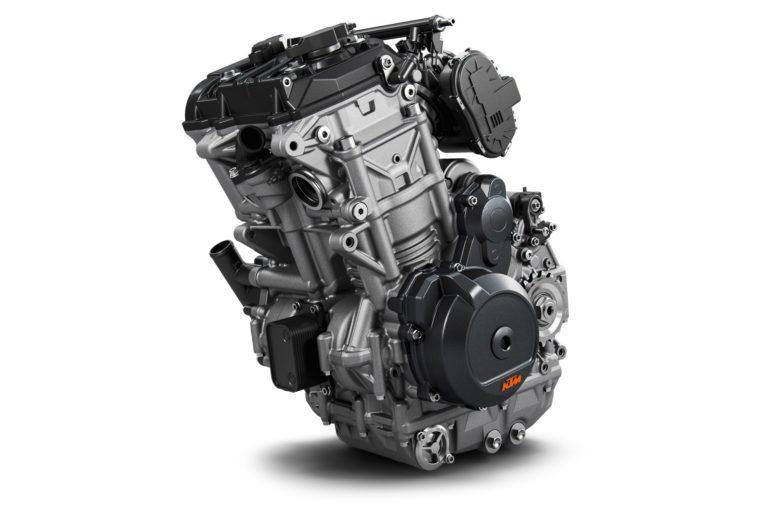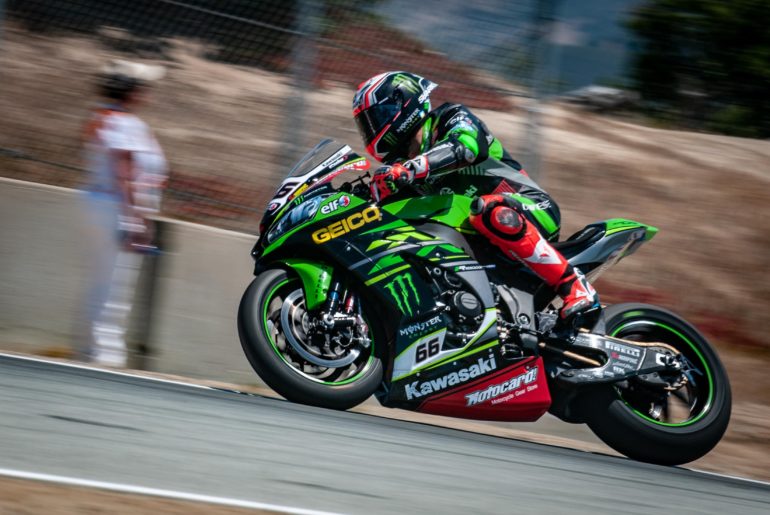When it comes down to it, it is always individual races which define an era. Silverstone 1979 defined the late 1970s, with Barry Sheene coming up just short of Kenny Roberts, a milestone in the American takeover of Grand Prix motorcycle racing.
In 1983, at Anderstorp in Sweden, Freddie Spencer brought the Roberts era to an end, by beating the triple world champion with an outrageously late braking maneuver on the final lap.
In the 1990s, what we might now refer to as the First Golden Age, Hockenheim 1991 typifies the battles between Kevin Schwantz and Wayne Rainey, where quarter was neither asked nor given.
The wild scenes at Eastern Creek and Jerez in 1996 marked the rivalry between Mick Doohan and the man came closest to stopping him, Alex Crivillé.
Valentino Rossi’s arrival in MotoGP may have been spectacular, but his win at Welkom in South Africa in 2004, his first race on the Yamaha since leaving Honda beating arch enemy Max Biaggi, was a watershed in his career. That was the point at which Rossi truly transcended the sport.
When we look back at this period, which will surely be called the Second Golden Age, then Assen 2018, along with the 2015 and 2017 races at Phillip Island, will be the races that fans and pundits point to as the ones which defined the era.
Mass battles between multiple riders, hard and close passing in which contact is frequent and accepted, a healthy mix of riders and bikes, of factory and satellite. Battles which rage almost from start to finish, with frequent lead changes, and an almost uncountable number of passes.
Who, And How
This era will also be defined by the man who won these races, and especially the way he won them. In the final laps, Marc Márquez found a little bit extra, was willing to take a little bit more risk, perhaps had a little more in reserve.
It was enough to get a gap, to break the tow, and to escape. For the first 23 laps, the gap between the leader and second was never more than about a third of the second, and less than a tenth for much of the time. In last four laps of the race, after taking the lead, Márquez opened up a gap over two seconds.
The winner may look inevitable when viewed in retrospect, but Assen 2018 – the 70th Grand Prix to be held at the circuit, and the 88th running of the race – will go down in history as one of the greatest races of all time.
The fact that this race, together with the Phillip Island races from 2015 and 2017, constitute arguably the three best premier class races in history, and that they all happened within three years of each other is irrefutable proof that we are living through a golden age, perhaps the greatest era of Grand Prix racing.
Right now, MotoGP is enjoying an embarrassment of riches.
That much was already clear from practice and qualifying. At the end of FP3, there were five riders within seven hundredths of a second. After qualifying, the top ten were separated by less than four tenths of a second.
Messing up a single corner could mean the difference between missing out on Q2, and starting from the front row. The fans were rubbing their hands with glee at the prospect of this close a field fighting it out for 26 laps.
Yet there was reason to be cautious. Dive into the lap times to analyze race pace, and it was clear that the field was divided into three distinct groups: Marc Márquez, eight or nine riders who had the pace for the podium, and the rest.
With Marc Márquez starting from pole, and his race pace two or three tenths better than the rest, the race could be over at the first corner.
The Horizon Beckons
That fear was raised further when Márquez switched to the soft rear tire on the grid. Was Márquez sacrificing pace in the later laps for a chance at making a clean break from the first lap?
The fact that Cal Crutchlow, Valentino Rossi, and Andrea Iannone, among others, had also changed to the soft suggested that conditions were just different enough to make the soft rear the better tire.
The fact that the Hondas, which normally went with the hard rear, had chosen the soft, and that the Ducatis, who had a tendency to prefer the soft rear, had chosen the hard, hinted that tire choice was even more complicated than usual.
When the lights went out, it was Marc Márquez who led into the first corner, but any chance of him making a breakaway were quickly thwarted by Jorge Lorenzo.
The Ducati Factory rider got off the line as if fired out of a cannon, and took the smart line up the outside of the pack to come from tenth shoot into third as he peeled into the first corner, then second at Turn 2, right on the tail of Márquez’ RC213V.
He harried the Repsol Honda rider through the first half of the track, before sliding inside Márquez at Mandeveen, and taking over the lead. Márquez poked and pricked through the Ramshoek and the GT Chicane, but Lorenzo held his line and used the acceleration of his Desmosedici GP18 to keep Márquez at bay.
Would Jorge Lorenzo be able to turn the tables on Márquez, and repeat the feat of escapology he displayed at Mugello and Barcelona? A lap and a half would tell us the answer to that question was no.
Márquez crept closer to Lorenzo as the pack chased through the Southern Loop, held the gas open through Hoge Heide and then let off the brakes to fly underneath Lorenzo into Ramshoek, one of the fastest and scariest corners at Assen. Márquez led once again, but there was little hope of making a break.
Fast Freight
Three laps in, and the shape of the race was becoming clear. Ten riders formed a freight train at the front, the group breaking behind Johann Zarco, Jack Miller unable to keep pace and losing ground.
The leaders were playing out a Moto3 race, though with much faster bikes and many years more experience. Lorenzo took the lead again at De Bult, Valentino Rossi came through on Márquez at the GT Chicane, hand-to-hand combat broke out every time the group exited the new North Loop and entered the Strubben hairpin, jockeying for position for the run onto the back straight.
Though the lap times were not face, the pace was still furious, riders pushing to the limit to try to break away, while simultaneously having to defend.
The race almost ended in disaster on lap 4, when Jorge Lorenzo lost the front at Meeuwenmeer, and saved it by backing off the gas. An unsuspecting Valentino Rossi careened into the back of Lorenzo’s Ducati. The two wobbled, but remained upright, a testament to their skill.
“At the beginning we were very lucky, me and Lorenzo, because Lorenzo cut too much Turn 12 and lose the front, and I arrive behind with a lot more speed and I hit him,” Rossi explained. “But we were very lucky because I hit him perfectly, so we don’t crash.”
“It was a very scary moment there, but I didn’t know what happened behind me,” Lorenzo said. “I didn’t know if someone crashed into the back, I didn’t know which rider it was, whether it was Márquez or another rider, but finally it was Valentino.”
Front to Rear
The problem for Lorenzo was that the grip from the rear was pushing the front, especially when he cut across the white line, which has a fraction less grip.
“We’ve been very lucky, because still with Michelin, we have a little bit more grip in the edge of the rear tire than in the front. Happened at Le Mans that I lost the front, and happened again here. I just went a little bit more inside and I touched the while line and the front closed.”
“So to avoid the crash, I had to reduce the speed and Valentino didn’t expect this lack of speed in that corner, and he hit me in the back of the bike. Very scary moment, and if it had have been a crash with all the group behind, it could have been very very dangerous.”
It was a timely reminder that as safe as MotoGP has been made over the years, the one major danger remains. If a rider falls in front of another, or even worse, in front of a chasing pack, there is a strong chance for it to end very badly indeed.
That the racing is so much closer in MotoGP has been fantastic for the sport, and wonderful for the fans, but it has made the danger of a collision much higher. On Sunday, perhaps thanks to the speed at which the bikes were traveling, both Rossi and Lorenzo could remain upright.
Danger or no, the incident between Rossi and Lorenzo did nothing to slow the frantic pace at the front of the race. Eight men remained, Aleix Espargaro and Andrea Iannone having dropped out of the group.
The group strung out and then reformed, split into separate clusters, then clumped back together again. At the front, Jorge Lorenzo led the way, with first Valentino Rossi behind him, then teammate Andrea Dovizioso.
Marc Márquez dropped back, then surged forward, passing Rossi and Dovizioso, then losing out to the Ducati again. Alex Rins had passed Cal Crutchlow, intent on mixing it up at the front.
After dropping back from sixth on the grid down to ninth, Maverick Viñales held of Johann Zarco, then started to inch forward.
No quarter
Though Lorenzo led, no pecking order could be established behind him. Dovizioso passed Rossi and Márquez, and half a lap later Márquez passed Dovizioso back. Viñales passed Rossi, then Rossi get ahead of Viñales again.
Sometimes, a pass would last for a lap or more, sometimes barely more than a corner. The fight was ferocious, with no time to rest. A lapse of focus would cost multiple places, running wide would mean that two or more bikes would pass.
Taking prisoners was a luxury no one could afford. On lap 12, Alex Rins pushed inside Marc Márquez at the Strubben hairpin, and Márquez tried to cut back.
As he did, he struck his knee and arm against Rins’ Suzuki, dislodging foot from the footpeg and knocking his hand almost off the bars. Somehow he stayed on, though even Márquez didn’t quite understand how. “I don’t know, even me. I just see a photo and it was crazy,” Márquez said.
“I remember that Rins, we have contact,” the Repsol Honda rider explained. “He touched me, but in the end it was my mistake because I was outside. When you are outside, you need to understand that the rider inside has the advantage.”
“Then just I was there and I had the contact and I nearly fell down off the bike. The left foot, the left hand, even the clutch lever was down there in the middle of the straight. I was trying to adjust and it was crazy.”
Fade Away
There was rhyme nor reason to the running in the middle of the race, the lead changing hands again as Jorge Lorenzo started to fade. Fatigue at running at a pace he could not sustain meant he dropped back through the field from lap 18.
“I was really surprised to lead the race for so long, because I didn’t have the pace,” Lorenzo said after the race. “I was half a second, six tenths slower than Marc and the other guys, for example. But you know, I have good concentration and I made a good start so I overtook Marc on the braking, I had good stability on the braking.”
The problem for Lorenzo was the final sector, always his bogey at Assen since the huge crash he had in 2013. It is also a part of the track where the Ducati suffers more, with very fast changes of direction which the Ducati struggles to handle.
“Unfortunately we have this T4 that we couldn’t solve the speed in that sector during all the weekend,” Lorenzo explained.
“We didn’t lose so much in the first part of the race, but when the rear tire started to drop and the energy wasn’t the same, because I needed to spend a lot of energy to be faster than the pace I could be, I was losing so much in T4.”
“So three or four tenths was too much to stay with the top guys, it was the only reason I couldn’t fight to the end for something big.” Even with the new tank pad, Lorenzo could not sustain the pace.
With Lorenzo out, the fight for the podium came down to five riders, Dovizioso, Rossi, Márquez, Rins, and Viñales. Crutchlow and Zarco followed closely, but could not make an impression on the leaders.
The battle for the lead was relentless, anyone getting out in front immediately forced to defend. The lead changed hands thirteen times in the space of six laps, with five changes of the lead on laps 21 and 22.
After Dovizioso had finally managed to snatch the lead from Lorenzo, he was forced to surrender the lead to Viñales.
Trading Places
Márquez took over from Viñales at Turn 1, then spent a couple of laps trying to hold the Movistar Yamaha rider off, Viñales creeping up on Márquez through the Ruskenhoek and onto his tail by the Stekkenwal.
As the pair braked for De Bult side by side on the sinuous straight before Turn 9, the battle was too much, and the two young Spaniard ran wide, allowing Andrea Dovizioso back into the lead, with Valentino Rossi close behind.
Rossi took over from Dovizioso at the GT Chicane, but at the expense of his exit from the final corner, allowing Dovizioso to come back again.
But Rossi was not done, and he snuck back underneath at Ossebroeken, the two Italian veterans heading to the Strubben hairpin together, noses level.
That pitched battle allowed Márquez to cut inside at the hairpin, and get the better drive through the fast kink on the exit, holding off the superior speed of the Ducati into the Ruskenhoek, and taking the lead back once again.
It was time to pull the pin. Márquez started to inch away from Dovizioso a hundredth at a time, opening a small gap by the end of lap 23.
That spurred him to dig deeper, taking another couple of tenths off his lap time and putting half a second into the Ducati, while Valentino Rossi passing Dovizioso through the GT Chicane gave Márquez another tenth.
Márquez was loose, and he was fast, and he had the gap he needed. No longer needing to defend either corner entry or exit, he could revert to the fastest line around the circuit, rather than the defensive line. Victory was his, his fourth of the season, a 50% average.
“In the end I was clever. I was just waiting,” Márquez explained in the press conference. “When I saw L7, L6 I say, okay, now I give everything. I will push all that I have. I will use all the tire. I was able to open a gap.”
“Then when I see +0.2, it was good because then I was able to do my lines. The problem is that here when you just try to use your lines to be fast, you prepare a lot the corner, so everybody was overtaking you.”
“But then when I see that a small advantage I say, okay, now it’s time to use my lines. Then I was able to have the same pace like in the practice.”
Choosing Wisely
Those lap times were the key to Márquez’ victory. The race had been slow – the front group were doing high 1’34s, and low 1’35s as they fought each other.
Riders were forced to defend on corner entry, which meant they were sacrificing corner exit, which meant they had to try to block in the middle of the corner to prevent being passed.
The wind, having picked up on Sunday, made it hard to get a gap, forcing riders to favor precision over speed through the fast final sector, making it easier for those behind to follow.
Conditions mitigated against making a break, until Márquez put it all on the line. He did his fastest lap on lap 24, half a second faster than those behind him.
He then held a mid 1’34 while the battle for second raged behind, and the chasing group were doing 1’35s. His advantage at the end was over 2.2 seconds, a far more comfortable victory than might have been expected.
That was mostly due to his own unmatched speed at that point in the race, but the fight for the podium behind him played directly into his hands.
Andrea Dovizioso’s move on Valentino Rossi into Turn 1 on the penultimate lap, which ran both men wide, ended up being the difference, both for Márquez’ gap and for the podium places.
Dovizioso’s move allowed Rins and Viñales through, and the two Spanish youngsters ended up taking the honors, the Suzuki rider ahead of the Yamaha.
Sweet Release
The end of the race was met with an explosive release of tension both in the stands and in the paddock. It had been an utterly exhilarating spectacle, and we had all forgotten to breathe.
There had simply not been time: passes had come at a furious rate, and at high speed. It was the pinnacle of racing, the best riders on the best bikes doing battle at close quarters with no regard for anything other than glory.
There had not even been time to be terrified, or thrilled, or feel any emotion except for the visceral excitement which close racing brings. This was as real as it gets.
The passes may have been countless, but that did not stop people from trying. The lead changed hands 17 times, according to respected Japanese journalist Akira Nishimura’s tally, which he thoughtfully followed up with a list of the sequence of leaders.
Twitter user Nicola counted a total of 99 passes among the lead group, which included a total of ten riders. The official MotoGP Twitter account listed a grand total of 175 passes, counted with the benefit of access to all of the camera angles at the track.
Even that total is open to debate, as at places like the Veenslang back straight, and the section between Stekkenwal and De Bult, riders rode two or three abreast, their front wheels constantly edging ahead of one another.
But from front to back, this was a thrilling race, with no position ever safe for very long.
This is what made Assen 2018 such a magnificent race, the closeness of the racing, and the frequency of the passing. And like the other two great races of the current era, at Phillip Island, the nature of the track and the conditions played a role.
Escape was hard, defending your line imperative, the track favoring courage over outright machine advantage.
Why So Great?
In the press conference, the podium riders gave their explanations for the racing being so tight. “The conditions of the racetrack of the weather, especially the wind,” Marc Márquez said.
“Before the race, we were speaking with the team, and on paper I have better pace than everybody. But I said to them it will be difficult to open a gap because when you are behind somebody on this racetrack plus the wind that was very strong, then it was easier.”
“In the fast corners, you were all the same speed. So it was so difficult to open a gap. Then Lorenzo was leading the race, but for me the main reason was the wind.”
Alex Rins put the spectacle down to the character of Assen, helped along by the conditions. “In my case, I think that the kind of track with a lot of fast corners also plus the wind was a little bit higher than the rest of the race,” the Suzuki Ecstar rider said. “This one is the problem for be a lot of riders on the front. This is more fun.”
For Maverick Viñales, the layout of the track made it easier to follow than to lead, again exacerbated by the wind. “I think it’s the point of reference here, as it’s a really fast track,” the Movistar Yamaha rider told the press conference.
“When you have some riders in the front it’s easier to make the lap time. Then for sure the strong wind help a lot because when was behind was much easier. As soon as I get alone in the front I start to go wide everywhere and moving a lot the bike. Sure, the wind help a lot of to stay all the group together.”
Real Talk
It is all of these things and more. Assen, like Phillip Island, is an old race track based on public roads, following the lay of the land. It is laid out by nature, not in AutoCAD, its design forced by topography, rather than imposed on the landscape by a designer.
The track is not particularly narrow, but it is fast, and the faster you go the narrower the track becomes. Having a target to aim at helps, and the corners flow into one another, offering a chance to counterattack if someone comes by.
The wind helps keep the bikes together, of course, making getting away difficult. Assen remains a magnificent track, and great tracks produce great racing.
But let us not forget two of the most important factors which contribute to the closeness of the racing. There were three different manufacturers on the podium, and another crossed the line in fourth.
The spec electronics has slashed the advantage of the main manufacturers, making it possible for Suzuki to catch up, and Ducati to gain and advantage.
The tires Michelin bring are all valid race choices – a condition of their contract with Dorna as official tire supplier – and each offer different benefits allowing different strategies.
In previous years, the result of the race was baked into the grid after qualifying, factory electronics and Bridgestones giving some riders a clear advantage. But no longer.
More important, perhaps, than the technical regulations is the sheer depth of talent on the grid at the moment. The records of Marc Márquez, Valentino Rossi, and Jorge Lorenzo speak for themselves, of course.
Despite their age difference, Andrea Dovizioso and Maverick Viñales have a similar number of Grand Prix victories, and both have a single championship in the smallest capacity class.
Alex Rins does not have a title – paddock lore has it that Monlau team manager Emilio Alzamora decided it would be Alex Márquez, not Rins who would take the 2014 Moto3 title – but he too has racked up the wins in the smaller classes, and cannot be far away from his first premier class victory.
Cal Crutchlow has MotoGP wins and a World Supersport title, Johann Zarco is a double Moto2 champion, and so on down the field.
Portrait of the Athlete as a Young Man
Has MotoGP found a previously untapped seam of talent? Not really. What has happened over the past twenty years is that the sport has become more professional, with riders fitter, more focused, and working harder than ever before.
This is not unique to motorcycle racing, athletes in every sport are doing the same, working on ever finer details of their craft, honing their skill, improving their fitness, looking for marginal gains wherever they can find them.
It has its downsides, of course. It has created a generation of riders who know very little of the world outside of racing, and have done nothing else since they were five or six years old. Racing, and the work needed to achieve their objectives in the sport, is all they know.
“I think that compared to fifteen years ago, the level of professionalism of the sport is a lot,” Valentino Rossi had said after qualifying.
“Now, the team, but especially the rider, try to work on all the small details, you try to learn, try to understand corner by corner, braking by braking. Fifteen years ago, it was more romantic. So you ride your bike, you have your feeling, but not like this.”
“Now you have to work more. Maybe it’s a bit more boring… But I think that this is one of the biggest differences and I think it’s good for the championship.”
This new generation crowded the podium in Assen. Marc Márquez, 25 years old; Alex Rins, 22 years old; and Maverick Viñales, 23 years of age.
Yet between them, they have 97 Grand Prix victories. Rins is yet to win a MotoGP race, and Viñales is still chasing his first MotoGP title, but those are not unrealistic goals for either. The Second Golden Age is not just down to the bikes, it is very much because of the riders.
Winning by Always Being There
Having Rins and Viñales on the podium was a godsend for Marc Márquez, though he had no hand in their getting between him and Valentino Rossi and Andrea Dovizioso, the two men he still regards as his main championship rivals.
Márquez is clearly dominating the 2018 MotoGP season, and looks to be well on the way to his seventh title, but his rivals are helping him as much as he is helping himself.
The simple arithmetic of the championship is on his side. Márquez has won half of the races held so far, and finished second in two others, allowing him to quickly rack up the points. But by historical standards, his points total after eight races is far from impressive.
Márquez’ current total of 140 points is less than the lead Valentino Rossi had after eight races in 2009, for example, and less than Casey Stoner’s lead at the same point in 2007.
But his advantage over the others is much, much bigger: Márquez leads Rossi by 41 points, whereas Rossi’s advantage in 2009 was a mere 9 points.
It is not just his wins which are helping, but above all, Márquez’ consistency. The Repsol Honda rider has taken 6 of the 24 podium places awarded so far, or one quarter of the total.
The other four races have been won by three different riders, and the remaining 18 podium places have been shared between nine other riders. The points drop between the top five places in Grand Prix motorcycle racing rewards podiums above all, and consistency after that.
Marc Márquez continues to feast at the podium banquet, while his rivals eat each others’ lunch.
Robbed
This, perhaps, explains Valentino Rossi’s frustration at being run out wide on the penultimate lap by Andrea Dovizioso.
“With 2 laps to go I was in a good position, because I was second and I think I have the potential for the podium but Dovizioso try to overtake me in the first corner,” Rossi said after the race.
“In the first corner I was very strong in braking and unfortunately he arrived in delay, too fast, and I have to go out of the track.”
It was a hard move, but one of many dealt out by all and sundry on Sunday, Rossi said. “For me it was an aggressive overtake, but we saw a lot today, minimum 25 aggressive overtakes.”
“But for me it was strategically not very clever because I think we both have the potential to arrive on the podium, second and third, and like this we lose a lot and arrive just fourth and fifth. So it’s a shame, but it’s like this.”
No Respect
If Marc Márquez was the biggest winner from the Assen MotoGP race, Alex Rins comes a very close second. His season so far has been strong, but littered with costly mistakes, but this race demonstrates Rins’ potential.
Finishing second, his best result in MotoGP, was important, but more impressive was the way in which he did it. Rins was fearless and aggressive, poking his bike into tiny gaps where it would barely fit. The move on Márquez into the Strubben hairpin was the most blatant example.
“Two or three laps before, I overtook Marc and I saw he was very strong on that corner,” Rins said. “I was feeling great. I was feeling good. I think, why not? So I release brakes and I overtake him.”
Attacking Márquez showed the utter lack of respect for status which is vital for a young, ambitious rider. Up and coming riders are often a little tentative when they face those involved in a championship battle, but Rins, like Zarco last year, is having none of that.
He put a hard move on Andrea Dovizioso at the Strubben with a couple of laps to go, then thread the needle past Maverick Viñales at the Ramshoek on the last lap, a move requiring courage and skill in equal measure.
“I think I was aggressive like all the riders,” Rins told me afterwards. “Finally, if you don’t put the bike in, the rider behind you will put his in front of you.”
“So I had a lot of overtakes, I learned a lot and the overtake with Marc for example was incredible because when I overtake him, I saw that he on the last two laps before I overtake him, he did the same, so it was perfect.”
Rins was already looking forward to the next few races, and sizing up his best opportunity to take that elusive first victory. “Sincerely, the tracks that are coming are very good for us and I have a good motivation,” Rins said. “Silverstone would be perfect for us, maybe Motorland Aragon, Phillip Island.”
Rins second place also gives Suzuki two more concession points, bringing their total up to five so far this season, one short of the number which would see them lose their conditions, such as unlimited testing and the ability to change the engine during the season.
But for Suzuki team boss Davide Brivio, the Japanese factory can’t wait to lose those advantages.
“I hope to make very soon the next concession points,” he smiled. The new engine – a bit more top end, without sacrificing throttle response or mid range – has put Suzuki in a position to be competitive. They are in racing to try to win, not manage concession points through the season.
Found Something, Need More
Maverick Viñales’ third place came as a relief to the Spaniard, finally feeling competitive again. For the past couple of races, Viñales and his crew have been focusing on the early laps of the race, the point at which he lost so much ground in the first part of the season, and could never regain, despite often being the fastest rider in the second half of the race.
“I felt good with a full tank, even better than at the last laps of the race, because it was difficult,” Viñales said. “We prepared the bike for the first laps. Was nice to feel strong at the beginning, nice to overtake many riders, a lot of contact. I think it was good moves. I can’t wait to be in the next race.”
“We recovered a lot of confidence in that weekend, especially we worked really well for the race,” the Movistar Yamaha rider said. “Still the bike needs to improve, especially on the electronics. It was good to be with the fast guys today because I know the point to improve.”
“I think our bike is at a good level. Honestly, on the chassis I think we are really good, in the fast corners I felt great. We need to improve a little bit with the electronics. We are coming on the good way, but still there is a lot of work to do. So I’m happy that we were there even if the bike is not at the maximum yet.”
That there is a lot of work to do is something of an understatement. This was the eighteenth consecutive race which Yamaha has failed to win, equaling the Japanese factory’s previous longest losing streak, between Sepang 2002 and Welkom 2004.
With the Sachsenring up next, the circuit where Marc Márquez has won for the past eight years, from 125cc to Moto2 and MotoGP, the chances of Yamaha’s losing streak being extended to 19 races is extremely high.
The one positive about the next race for Yamaha is that the Sachsenring is where they are scheduled to receive some updates, at last. Yamaha staff speak vaguely of “big updates”, without being particularly specific.
It is believed to be a major update to the electronics, though it remains to be seen how effective that will be. Even if it performs as well as Valentino Rossi and Maverick Viñales hope – and boy do they hope – it is still the Sachsenring, Marc Márquez’ personal German playground.
On the Limit
As thrilling as the race was for the spectators, Andrea Dovizioso was less appreciative. A mark of the generational difference between the riders who came up through the hurly-burly of Moto2 and Moto3, and the carefully orchestrated battles of 125s and 250s, Dovizioso was not amused by the aggressiveness of the passes.
“I think every rider loves to overtake other riders, and it’s really nice when this happens, but there is always some way to overtake riders. I think most of the time with some riders, it’s too aggressive,” Dovizioso said.
The passes made had not been against the rules, Dovizioso stressed, but that did not make it right. “Everybody did everything within the rules. Everything OK, but really on the limit,” he said. “I think there are some overtakes when you enter very fast at the end, it can happen. But if you are doing this intentionally, it means you want to do that, and this is bad.”
Dovizioso had done some passing of his own, of course, though he rejected the criticism leveled against him by Valentino Rossi. “Both riders, we would like to exit in front in Turn 1,” Dovizioso said.
“But he was outside, so I control the brake. He released two times the brake and so I released two times the brake and we went a little bit wide. But I didn’t make something crazy, and I stayed on the track.”
Dovizioso did have some sympathy for Rossi, however. “If I put myself in Valentino’s position, I can understand because he lost for sure some positions. But I didn’t make something over the limit and I think he did a wrong decision.”
“Because when you are on the outside, to release two times the brake when on the inside there is one of the hardest brakers, I think is a bad idea at the end of the race. This is what happened. I’m sorry for him but this is the reality.”
Missing Tire Management
The good news for Ducati is that in dry weather and perfect conditions, both Ducati Factory riders had been a permanent fixture at the front. Both riders had led multiple laps, and Andrea Dovizioso had finished fourth.
But Dovizioso was critical of the last phase of the race, where they are losing too much performance from the tire as it wears.
“Still we are not 100% happy, because in the last eight laps, I didn’t have any more traction. That’s the reason why I couldn’t stay with Marc, and I couldn’t fight for the podium. That is the negative point of the weekend. I’m happy about the fourth position, because the last eight laps I was struggling a lot, I didn’t have the speed.”
His result was down to racecraft, not the bike, Dovizioso said. “I did fourth because I put myself in the right position in the right moment, not because in the end we were fast enough to be fourth.”
“I’m happy in the way that I rode the bike in the race, but we have to try to improve a little bit the way to manage the rear tire. Because the difference from last year, is that when you lose the grip at the end of the race, we are completely far.”
“And last year we had a possibility to manage the consumption, and be fast at the end of the race. This year, with this tire, no. But this is the tire, and this is the characteristic, and we have to try to adapt my style.”
“But especially the bike to the tire. Because also in Qatar, where I won, I couldn’t make the difference in the last three laps. This is the confirmation that the tire is different. The difference is very small, but when you are on the limit, small things can be big things.”
Mr. Consistent
If Marc Márquez is leading the championship due to his consistency, Valentino Rossi is second in the title chase for much the same reason, despite trailing the Spaniard by 41 points. Actually beating Márquez to the title looks nigh on impossible, but the Italian veteran is confident of holding on to second place.
“Like I said also during the practice, Marquez was the stronger and today he fights but he has a margin to go alone, and at the end when he decided to go, he arrived alone,” Rossi said.
“It’s difficult because he is faster than us but also faster than everybody else. So I think for the championship it will be very hard, but I think for the same point that we have a great fight for the second place, with another two or three riders minimum.”
“We have to try, and also we hope that we can improve the bike during the season, for the end of the season, but it’s not very easy.”
Rossi, like Viñales, is hanging on for improvements due at the Sachsenring, the Movistar Yamaha M1 performing well at Assen thanks to its chassis, but being held back by its electronics.
“Sincerely, during this weekend we were competitive, but because this track is good for the M1 and we can use some good things of the bike, some strong points,” the Italian explained.
“I think that both me and Maverick, we have the potential to arrive on the podium. But it’s difficult and at the end in the race I was more competitive than in the last race, it’s true, but we suffer.”
“In acceleration we are not strong enough and we have to work, so I hope that we can improve the bike. The season is still long and this year the bike is very good to ride but in acceleration we need to make a step.”
Cal Crutchlow did his championship position some good, coming home in sixth, though he was far from satisfied. Having a close battle with a large group was bad for the Honda, Crutchlow said, as the RC213V has a tendency to overheat the front tire.
“The Honda shakes. Our front tire overheats too much,” the LCR Honda rider said. “And I think you’ve seen today, we’re getting beat by Ducatis on power significantly.”
“Don’t get me wrong, my team did a good job and they prepared a bike that was good enough for the podium. But I never made it happen. I made one mistake at turn eight with three laps to go.”
Crutchlow had been aiming for the podium, and was disappointed to have fallen short, he said. “Listen, I’m disappointed, but I’m very pleased to be battling with the best guys in the world. We always said if we had a bad result this year, it would need to be sixth.”
“We were sixth, three seconds off the win with me making a massive mistake. We didn’t put it on the floor. That’s what needs to be done to be there in the championship. I have to start scoring podiums soon. In the last few races I’ve wanted podiums and been close to that fight.”
“But we haven’t made it happen. I’m pleased to beat Zarco. I’m pleased to beat Lorenzo. They were both really tired. They couldn’t even change direction on the bike. Nice to see. If they think their bikes this year are hard to change direction, wait until they ride what they’re going to ride next year.”
Unlocking the Secrets
Jorge Lorenzo was indeed tired, from the effort of pushing the Ducati Desmosedici GP18 faster than it wanted to go. But Lorenzo took what may be an important lesson from Assen, and the key to regaining his confidence around the track.
Since his monster crash in 2013, and his insane dash back to Barcelona to have his collarbone plated, only to return to complete the race and finish fifth, Lorenzo has been wary of Assen, especially through Hoge Heide and the Ramshoek, the point at which he was flicked off his bike and into the hospital. But he believes he may have found something at last.
“In the final sector, T4, particularly the Ducatis struggle a little bit in high speed changes of direction,” Lorenzo said. “All the Ducatis struggle a little bit in T4, but especially from my side, I struggle even more.”
“Because I am already struggling with the Yamaha. In the middle of the race, I understood some secret to make this sector a little bit more quick, but I already didn’t have so much energy, because I was faster than I could be during the race.”
“And also I didn’t have any tire. So what I understood to make it better, I lost it from the tire and the energy. Next year I think I will improve in that sector.”
If Lorenzo can exorcise his demons at Assen, that will be a big step forward. His next challenge will be to address his weakness in mixed conditions. If he masters that, then he really is back in the hunt once again.
Johann Zarco finished eighth, a steady result badly needed after a couple of difficult weekends. He was back battling with the front group, observing and learning when he can. He lost grip in the last eight laps, just as the factory Yamahas had.
Alvaro Bautista came out of the race in ninth, and in a very strong position. The Spanish veteran had worked his way forward on the Angel Nieto Team Ducati, and gone on to challenge Zarco.
The problems with rear he had at the start of the season have been banished, ironically by giving up on pursuit of rear grip, and focusing on the front. Bautista is in the running for the Petronas Yamaha bike if Dani Pedrosa decides to retire, and his upward swing of form will have done his chances no harm whatsoever.
Ever Closer
The fact that a former 125 champion and multiple Grand Prix winner would finish ninth at Assen, just 7.5 seconds off the winner, is a sign of just how close this race was, and how deep the field is at the moment.
The 88th Dutch TT at Assen – the 70th time a Grand Prix has been held at the circuit, or its forebears – was the closest MotoGP race in history, the top 15 finishing within 16 seconds of the winner, beating the previous record set at Qatar this year by 7 seconds.
Assen was the third race of the 2018 season to join the ten closest races, joining Qatar and Mugello. The six closest races in history – measured by the gap between all points-scoring places, from first to fifteenth – have all been held in the 2017 and 2018 seasons, with the top two held this year.
If that isn’t a sign that we are living through a Second Golden Age, then I don’t know what is.
Photo: MotoGP
This article was originally published on MotoMatters, and is republished here on Asphalt & Rubber with permission by the author.

